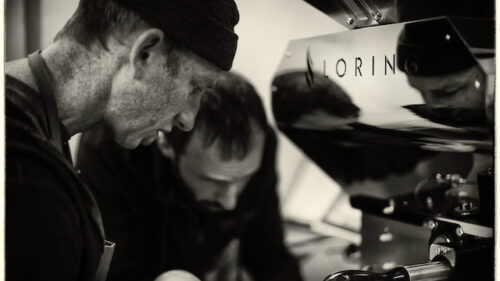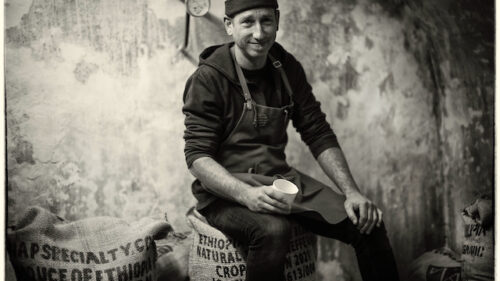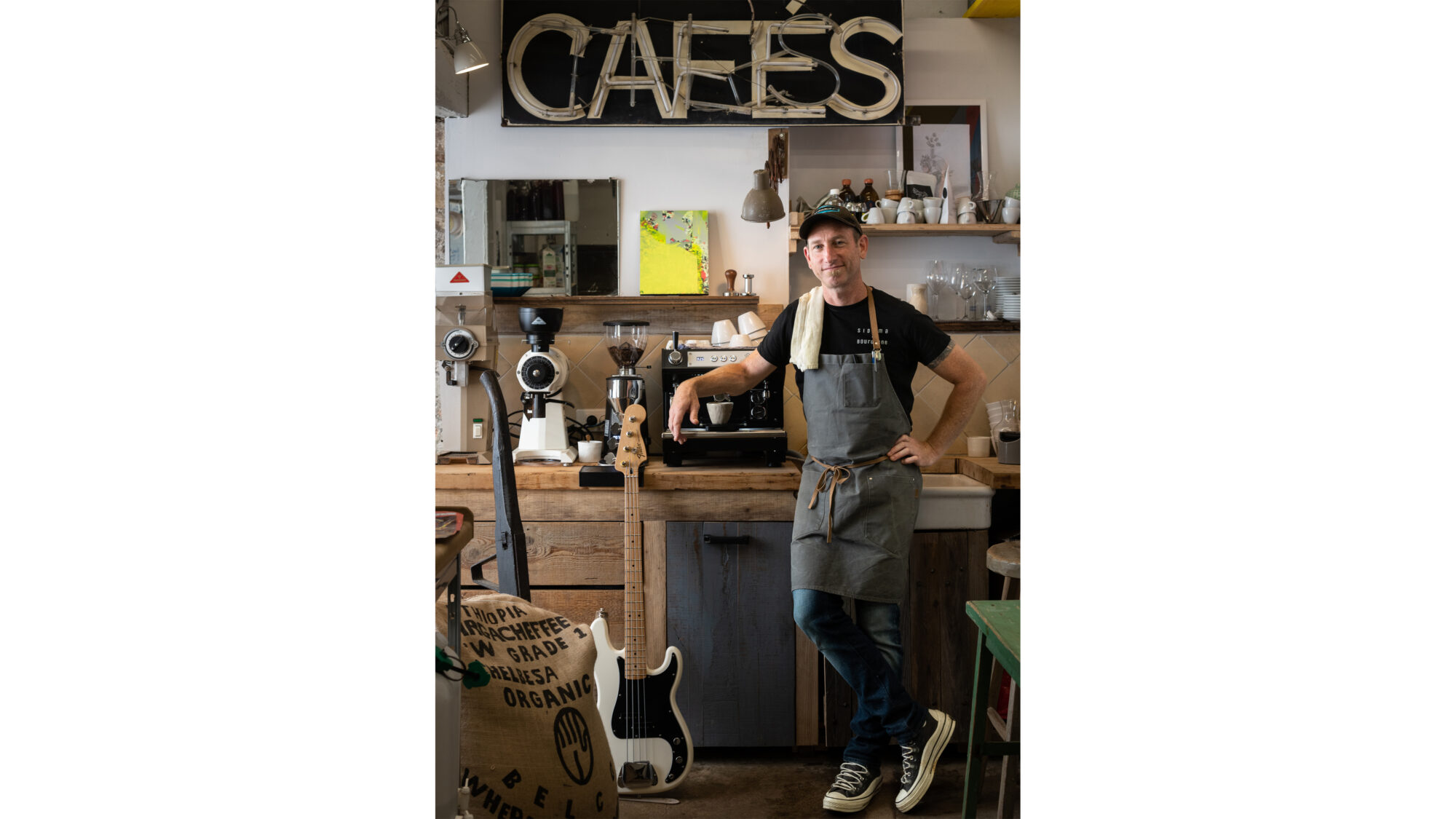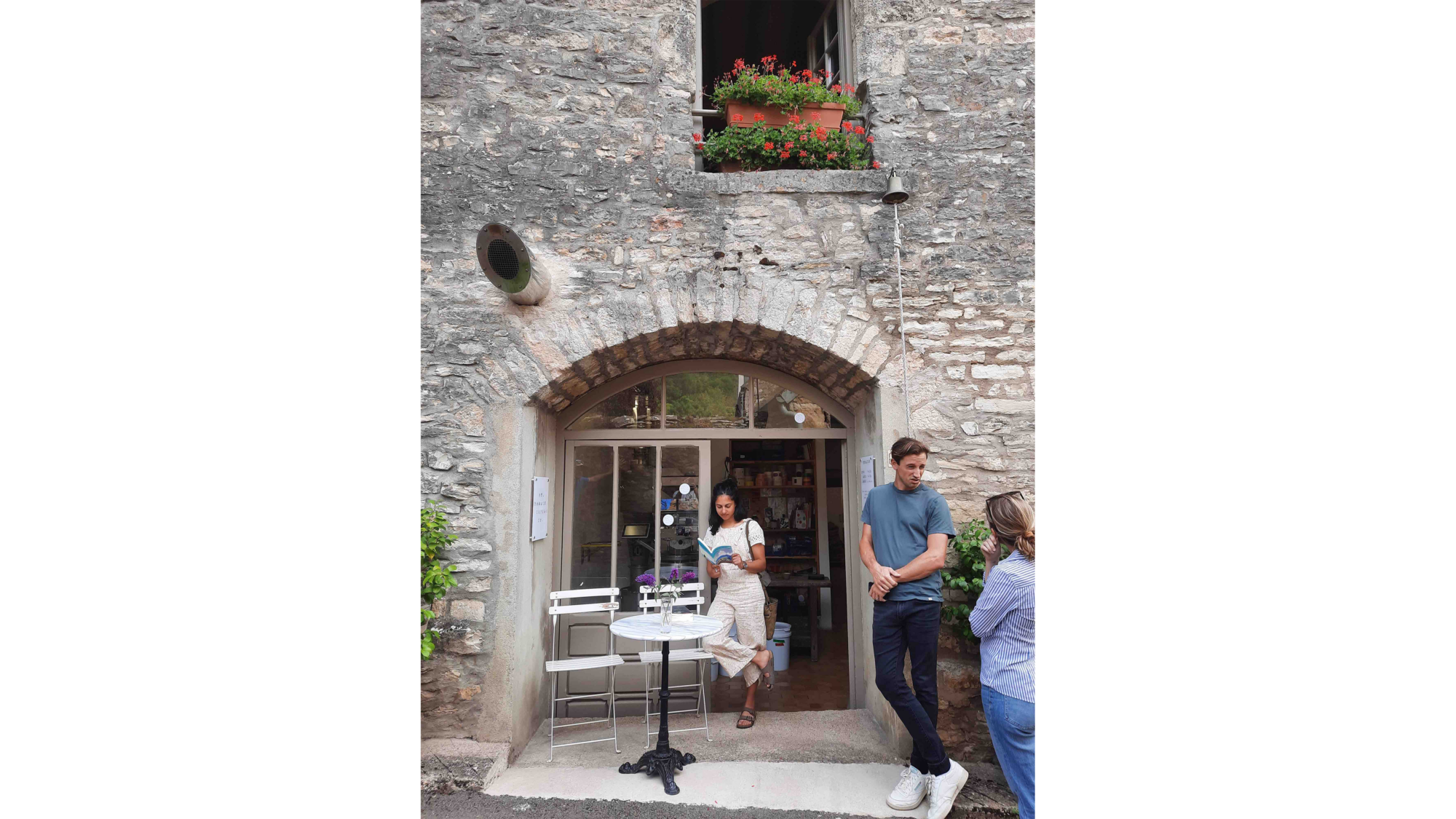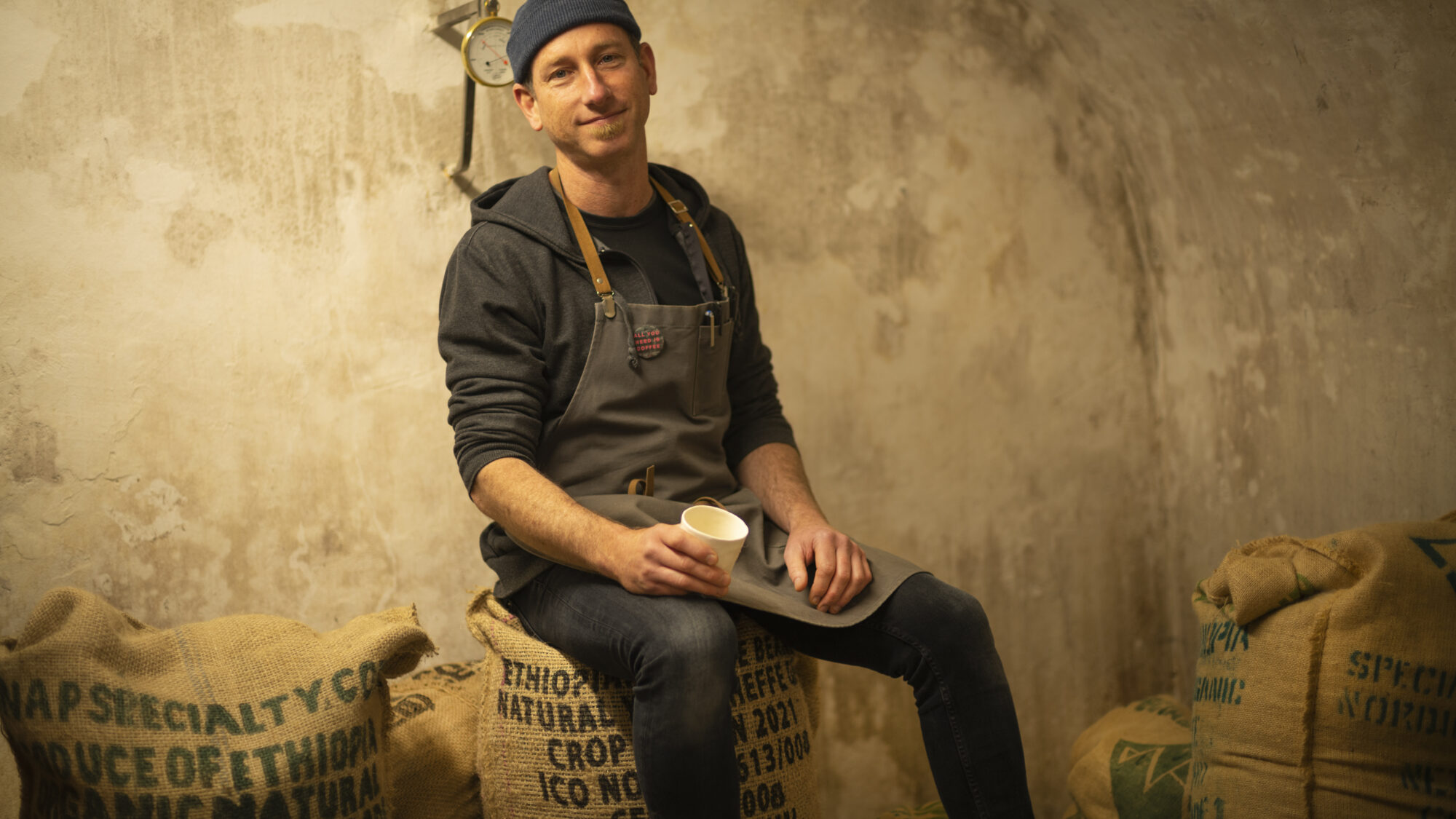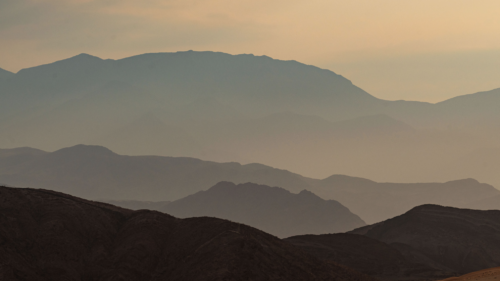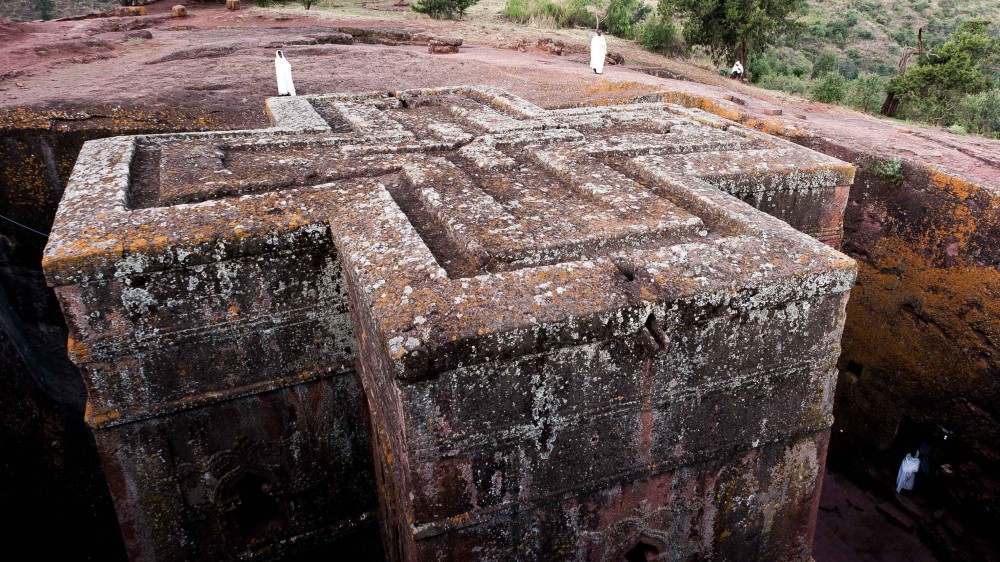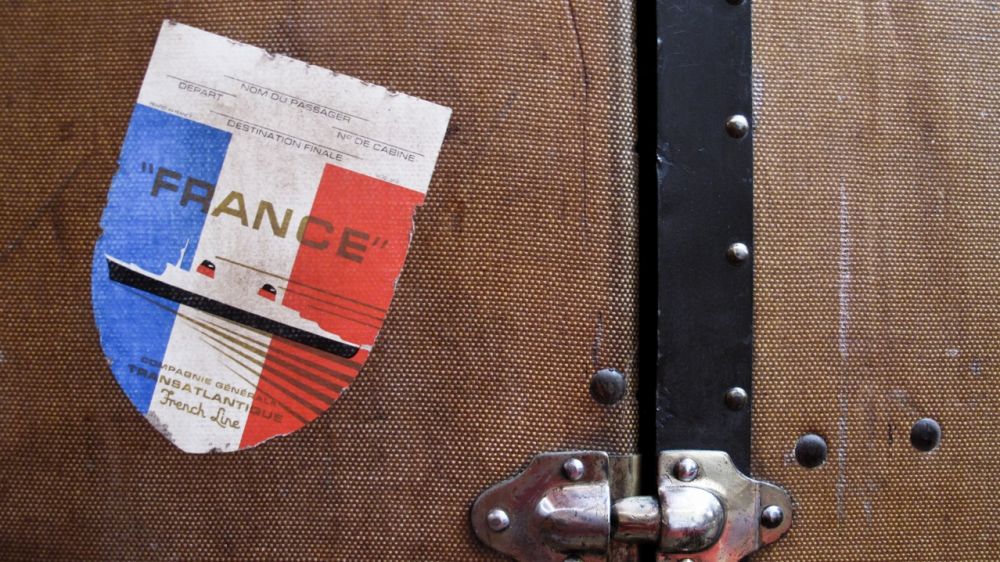The Wine-maker, the coffee roaster, and the Ethiopian Farmers putting their minds together for flavour
Matt McClune, coffee roaster extraordinaire at St Romain Coffee Co. in Burgundy’s Côte de Beaune, approaches all his projects in life with an untiring conviction that everything benefits from more thought, more attention and more deliberation.
I should know this, because I’m in a village rock band with him (we trademarked the musical genre of EDR), and the diligence he brings to his coffee roasting (and sourcing, and pouring) is the same as the delicate deliberation with which wires up the amps, sweats over the set list, and lovingly drapes flashing LED string lights over the drum kit before our gigs in local bars and wineries. No detail is too small to warrant full-beam mental attention. Matt adheres to the philosophy of incremental gains in a way that makes Dave Brailsford look like a hatchet job man. And you can taste it in his coffee, which after just 18 months in business, has something like cult status at the top of the food and wine obsession pyramid (just ask these guys.)
Which is why my ears pricked up when he told me about his current travel plans to Ethiopia. As his travel friend, I’ve been looking forward to when Matt would take a trip to Ethiopia ever since he first started talking about starting his coffee company. I could only imagine he’d have an interesting purpose. I will admit that I didn’t think it would involve the niche art of carbonic maceration – hold on a few paragraphs for more on that. But I did think it would be unusual and interesting.
Matt’s off to Ethiopia for ‘work’. I’m of the firm belief that work trips are often the very best trips because by definition you’re on some kind of a mission. You have to meet people, hunt down solutions, knock on unopened doors, and generally figure out how to unravel a giant ball of wool. It’s the very definition of the sort of curiosity which at Trufflepig we think makes the best state of mind for travel. And in the process, you meet people on their own turf, going about their daily work, engaged in what is likely the thing they care about most, after their family and kids; but you meet them too, because generally you get invited round for meals.
So what would Matt’s mission be in Ethiopia? The answer is a wonderful example of curiosity at play, which is why I wanted to write about it. Also, it’s a work in progress, with an as-yet unknown outcome, which again is often the best sort of travel.
For St Romain Coffee, Matt sources organic single-origin coffees directly from carefully selected mills across Ethiopia. He roasts them with a Vermeer-like attention to detail using his state of the art Loring. I’ll spare you the story of the 12-month mission he went on to find the perfect packaging, or the sleepless nights finding the right font. The point is that he’s applied his laser-like focus and curiosity to all the parts of the process he can control from his homebase.
But there’s no off-button on curiosity. So he gets to thinking about precisely how the coffee is picked and processed and packaged before it arrives at his door. Coffee beans are the seeds of the coffee cherry; the fruit is grown semi-wild, picked (generally by independent farmers) and transported to mills for drying and processing. I’m simplifying. But factors like the ripeness of the fruit at the moment of picking, precisely how the seed is removed, in what manner they’re stored and handled – all of these variables will play out in the flavour and character of the coffee.
Of course Matt’s not the first person to think about these things. The quality coffee market is certainly large enough to encourage (and compensate) innovation. Already Matt is working with farmers and mill owners in Ethiopia who are interested in these variables, and who have for years been experimenting with techniques and production processes to optimise for quality rather than just quantity.
But he is in a real sense the first person, or certainly the best placed person, to bring a new angle on a niche technique which has been very slowly gaining ground in coffee, because that technique has direct parallels in the world of wine-making, which of course surrounds Matt here in Burgundy. Most of our friends and neighbours are in some way involved in wine (including half of the afore-mentioned village rock band – not for nothing our only online review is in a natural wine blog); and among them are some equally curious-minded and innovative wine-makers. The technique in question is carbonic maceration.
And this is where we need to introduce the other character in the story, winemaker Christian Knott of Domaine Dandelion in Burgundy, just a few villages away from St Romain. Christian is an equally open-minded and experimental sort of a guy (he once told me he bathes in goat’s milk), with a strong personal interest in coffee (and fireworks), but mostly with several years of experience with carbonic maceration in the wine-making process under his belt.
Carbonic maceration, in short, is the practise of dousing the recently harvested grapes in carbon dioxide (literally macerating them in CO2 in an enclosed tank) which has curious and tasty effects on the internal chemistry of the grapes at the moment when fermentation is normally beginning. It brings out certain flavours, and can be used as an alternative to various other ways of starting the fermentation process. As natural wine-making has gathered speed, so has the practise of carbonic maceration, in direct opposition, for example, to the addition of industrial yeasts to the grapes as a sure-fire way of getting the fermentation up and running. Such practises, very popular 20 years ago, are fool-proof, but also make everything taste the same.
The potential to use the same process in coffee making to tease out flavours is what Matt and Christian are keen to investigate. Carbonic maceration can be used to initiate an enzymatic fermentation within the coffee cherry itself, literally transforming the fruit from the inside out. This takes place before the seed is separated from the cherry flesh, and one question is the degree to which such processes would affect the seed rather than just the fruit. The ultimate aim is to delivery interesting flavour profiles to the resulting brew. And the big picture is that such practises have the result of putting more expertise in the hands of the coffee growers and producers, as opposed to the parts of the quality coffee industry further down the production line.
The thing is that barely anyone has really tried it, and those that have don’t have anything like as much experience in this dark unusual art as a Burgundian wine maker.
So Matt’s done that thing that I love most, which is to look around him and see solutions and ideas in one place, and to try to apply them to another. His curiosity has made an association and a connection, and now he’s carrying that connection out in person, by travelling in Ethiopia with Christian, where they’ll be welcomed by two coffee producers already trying out the technique, to see what strange magic and chemistry they can conjure up. Those coffee makers are Daye Bensa and Heleanna Georgalis.
What are the results? I have no idea – they just landed this morning in Ethiopia. What a generous and inspired connection he has made. Why don’t you follow Matt on IG and see how the adventure unfolds.
